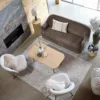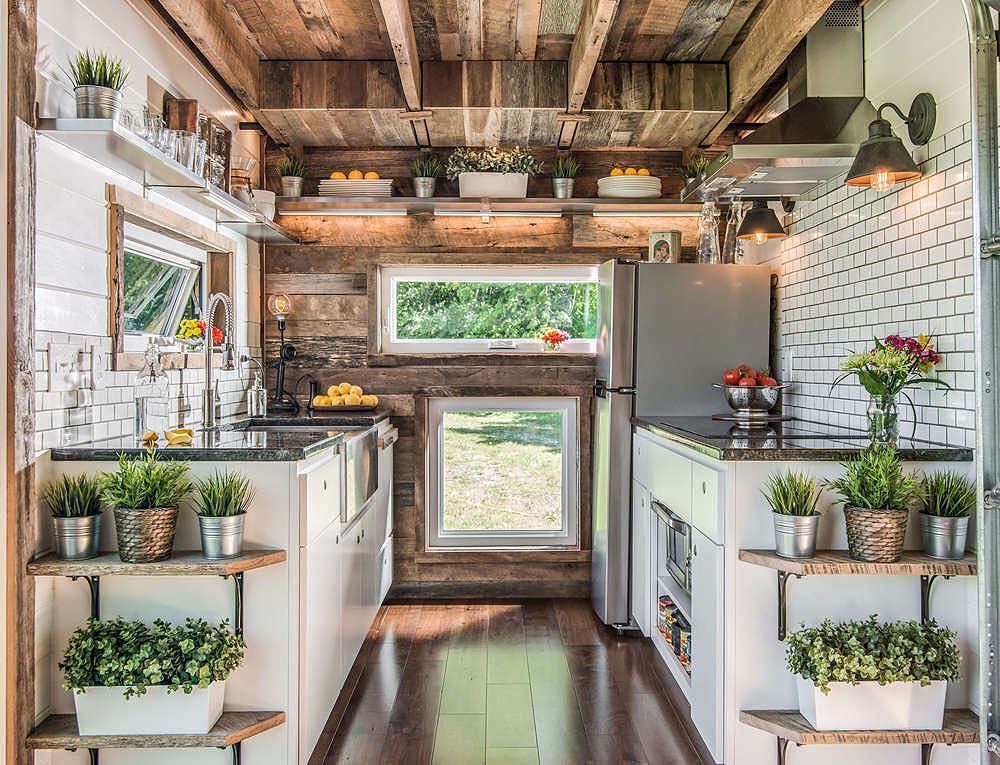Living in mini houses is a real architectural and social movement that celebrates simple living in a small home. In 2018, the International Housing Code also officially defined what kind of house qualifies as a mini house: it must be less than 37 square meters.
If until now it was considered that a comfortable life means living in a huge house with at least as many bathrooms as there are residents, on at least two, and even better three or four floors, with an indoor gym and maybe a swimming pool, sauna and jacuzzi on the terrace right next to the huge garden, which starts with a three-car carport, the trend is now turning in a completely different direction. Years ago, small, tiny, mini-houses began to appear around the world, where couples or families live, as they say, a comfortable life in just a few tens of square meters, but with completely different values.
HOW DID IT ALL START?
The mini house movement started in the US as intellectual, architectural and social turn, who advocated simple living in a small space. Economic crisis, which erupted years ago 2008, launched the mini-houses into the stars. When the banks no longer gave credit and the unemployment rate was higher from month to month, for many, a mini house was the only way to keep a roof over their heads. In a short time, the movement became very popular on the other side of the world. They were the first enthusiasts of the new living concept New Zealand and Australia. About five years ago, the trend bravely entered the area as well of Europe.
WHY ARE MORE AND MORE PEOPLE CHOOSING MINI HOUSES?
There are quite a few reasons, but all of them destroy the mentality that generations have lived with until today. The meaning of life is no longer to build a big house for which we will pay off the loan for the rest of our lives. We don't have to invest our free time and savings into maintaining this huge building we're going to build for ourselves. However, in order to decide for such a way of life, it is necessary to forget a whole bunch of stereotyped beliefs that we learned at home during our life, or that are so socially cemented that it is difficult to believe that life can be different. People who choose to live in a mini house will have to adopt a new value system.
The movement promoting mini homes is encouraging financial prudence, economic security, community living experience and a change in mindset based on consumerism. Mini houses are affordable, ecological, and in all respects significantly less burdensome on the environment.
These are the reasons why the mini house movement is becoming more and more popular:
- financial availability (in some countries you can buy a tiny house for as little as 3,000 euros)
- very, very low cost of living
- self-sufficiency
- sustainability
- environmental awareness
- a simple life
- live an adventurous life (you can take the house to a new location at any time)
- live with less and be more satisfied
DURABILITY
Man is to blame for changes in the environment. Construction is also one of the interventions in nature that benefit only humans, but only harm the environment. The concept of a small and mini house is based on the principle of sustainability. These homes are built from environmentally friendly and renewable materials, do not use environmental resources and are energy efficient.
The way of life offered by the mini-houses allows the owners to be directly connected to the environment and the natural ecosystem. The very lifestyle offered by living on such a small square footage does not allow for a life dictated by a consumer society.
HOW IS MINI HOUSES ACCEPTED BY SLOVAK LEGISLATION?
Legislation on mini houses is different in each country. In the USA, Australia and some European countries, living in mini-houses is really unproblematic. However, the situation here is completely different. Slovenian legislation regulates legal living in mini-houses as follows:
- if you would like to live in a mini house, you need building plot and everything necessary documentation;
- in Slovenia, unlike most other countries, you also need a building permit for a mini house. Since its square footage usually does not exceed 25 square meters, it is sufficient building permit for undemanding buildings. Here you have to take into account that, according to our legislation, a mini-house can only have one floor, it cannot be higher than 6 m, and it can measure no more than 2 m in depth;
- only on a buildable plot can the mini house be connected to communal connections and let's sort it out domicile;
- even owners of mini houses must in Slovenia to pay duties;
- before you start thinking about building a mini-house, ask the competent administration if such a facility is even allowed in the area.
The above rules apply to stationary houses and not to mobile ones. In Slovenia, mobile homes are facilities in which permanent residence cannot be registered, and are thus treated as facilities for temporary residence.
MINI HOUSES NOW AVAILABLE WITH US

Now you can also imagine your very own mini house with us. Company houzEko from Koper is a manufacturer of tiny houses on wheels. They have developed three common models innovative design. The houses are built on a 7.2-meter-long chassis, which can transport an object with a maximum height of 4.2 m and a maximum weight of 3.5 tons. They are made from natural materials and in cooperation with local companies. The house can be adapted to your wishes, and the prices vary between 25,000 euros and 63,000 euros.
"Mini" price for a mini house... and most importantly, your expenses will also be "mini" so that you can live a rich life.
INTERESTING FACTS ABOUT MINI HOUSES AROUND THE WORLD
- 68 percent of the owners of mini houses no credit or mortgage;
- 55 percent of mini house owners have higher cash savings as owners of standard houses;
- 78 percent of people who have mini houses are their own owners in full, compared to 65 % people who have standard houses;
- approximately two out of five owners of mini houses are older than 50 years;
- as many as 55 percent of mini-house owners are female;
- owners of mini houses in pension fund they invest significantly more than owners of ordinary houses.






